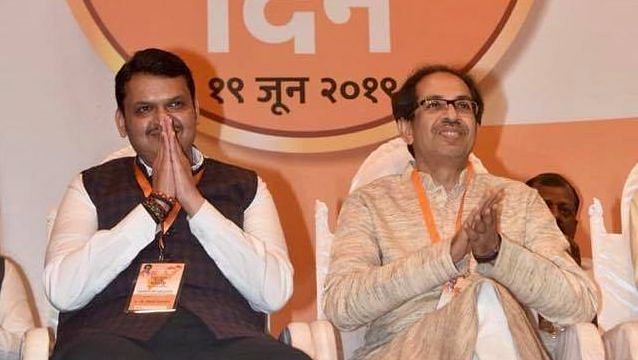New Delhi: With no end in sight to the stalemate over government formation in Maharashtra, a constitutional crisis may be in the offing in the state.
It has been two weeks since results for the assembly elections were announced 24 October, but differences between allies BJP and Shiv Sena over the chief minister’s chair continue to stall government formation.
The term of the current assembly expires Saturday, 9 November, and this has triggered speculation that Maharashtra may be headed for President’s rule.
But that may not be the case even if the BJP (105 seats) and the Sena (56), which together have 161 of the assembly’s 288 seats, fail to resolve their differences.
Also read: Amit Shah ‘arrogance’ delaying Maharashtra govt formation — Sena leader asks RSS to step in
The assembly will come into existence
The new assembly will come into existence immediately after the term of the previous one expires, even if there is no government formation, said constitutional expert Subhash Kashyap.
What this means is that the new MLAs will be sworn in, and will begin to get their salaries, allowances, etc.
To begin with, staking claim to form the government is a misnomer, Kashyap said. “According to the Constitution, there is no provision to stake claim to form the government… It is an unfortunate trend that has gained currency,” he added.
According to Kashyap, it remains the governor’s prerogative and discretion to decide who to call for government formation.
“The governor can invite the leader of the single-largest party to form the government or call the largest pre-poll alliance to form the government,” he said. “In any case, they have to prove their majority on the floor of the house.”
“If they fail to command majority support, the governor can call the leader of the second-largest party to form the government… And if they, too, are unable to prove their majority, the governor can recommend President’s Rule to the President,” Kashyap added. “But in any case, the President’s rule must remain the last resort.”
President’s rule can be imposed in the state for six months after which the Election Commission will have to announce fresh polls in Maharashtra. However, in the meantime, if any political formulation emerges that can prove its majority on the floor of the house, President’s Rule can be dissolved.
The Constitution lays down no time limit before which the governor should invite a party to form the government, but the governor should have invited one party or alliance to form the government by now, Kashyap said.
In fact, the governor can also send a message to all legislators to elect their leader by way of voting in case of such a stalemate.
While talks of government and alliance formation often take place through informal channels after election results are declared, Kashyap said, “ideally… talks of this nature should not happen in party offices, on the streets or in Raj Bhavan, but on the floor of the house”.
To be sure, there have been instances where a second alliance was called in after the first choice failed to prove their majority. In 1996, while Atal Bihari Vajpayee was invited by the President to form the central government, he failed to prove his majority 13 days later, and the United Front government was formed.
Also read: Nitin Gadkari as CM is floated as solution to Maharashtra political stalemate
